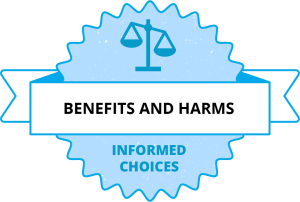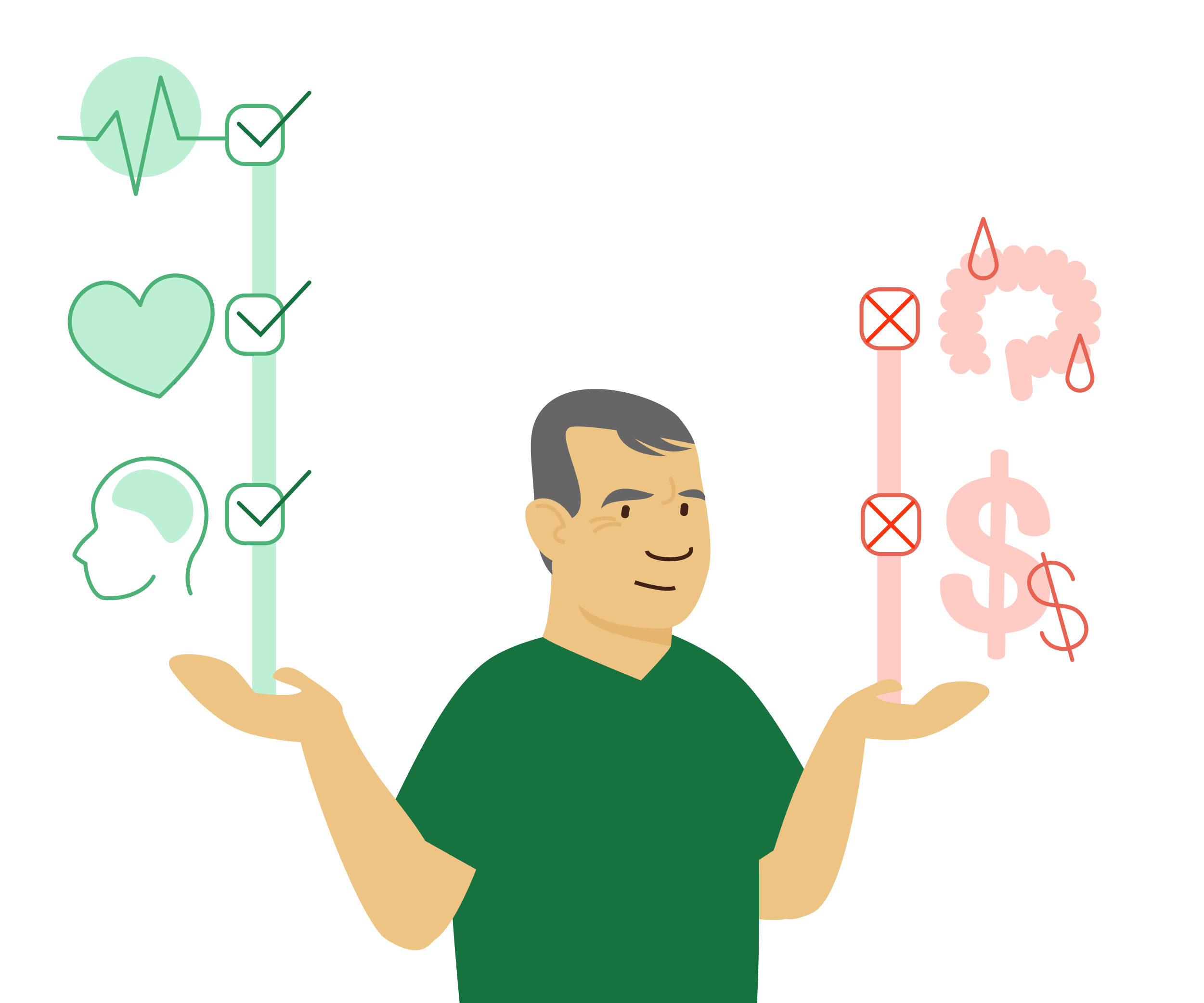 Weigh the benefits and savings against the harms and costs of acting or not.
Weigh the benefits and savings against the harms and costs of acting or not.
When deciding whether to use a health action, it is important to think about whether the health action is more helpful than harmful, not just whether it is helpful.
Explanation
Health actions have both advantages (benefits and savings) and disadvantages (harms and costs). Often, people tend to exaggerate the advantages and ignore or downplay the disadvantages. Individuals, clinicians, and policymakers deciding about whether to take a health action should consider the possible benefits and savings of the health action and the possible harms and costs. When a decision affects many people, it is important to consider the advantages and disadvantages for everyone. Who will benefit, who will be harmed, who will achieve savings, and who will bear the costs?
For some health actions, the advantages clearly outweigh the disadvantages. However, the advantages and disadvantages are often closely balanced, and need to be carefully weighed.
When the advantages of a treatment clearly outweigh the disadvantages, deciding what to do is relatively easy. On the other hand, when the advantages and disadvantages are closely balanced, deciding what to do can be difficult.
Example
For people who have had a heart attack or stroke, the advantages of low-dose aspirin compared to not taking aspirin (reduced deaths, heart attacks, and strokes) are substantially more than the disadvantages (increased serious bleeding in the gut, and minimal inconvenience and cost). Most people in this situation would choose to take aspirin. However, for someone 50 years or older without symptomatic heart disease or stroke, aspirin only slightly reduces deaths if taken for 10 years, and the reduction in heart attacks is closely balanced with an increase in serous gut bleeds. Some people in this situation would choose to take aspirin, and some would not.

Remember: Always consider whether the possible advantages of health actions outweigh the possible disadvantages.
Primary school
- Lesson 8. Advantages and disadvantages of a treatment. In: The Health Choices Book: Learning to think carefully about treatments. A health science book for primary school children.
- Animation: Advantages and disadvantages of a treatment.
Secondary school
- Lesson 8. Personal choices. In: Be smart about your health: Think critically, make smart choices.
- Lesson 9. Community choices. In: Be smart about your health: Think critically, make smart choices.
Other
- Podcast: Episode 1 of The Health Choices Programme: “Benefits and harms“
- Podcast: Episode 6: Benefits & Side Effects. Parents Making Informed Health Choices.
- Blog: Do the advantages outweigh the disadvantages? Students 4 Best Evidence.
- Book: Chapter 6. Consider the Downsides. In: Know Your Chances: Understanding Health Statistics.
